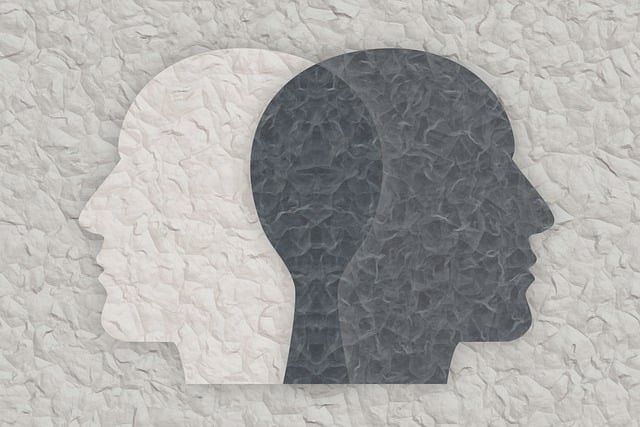BPD vs Bipolar: Understanding the Key Differences and Similarities
Mental health disorders, such as borderline personality disorder (BPD) and bipolar disorder, are often misunderstood due to overlapping symptoms like mood swings and impulsive behavior. While these conditions share some characteristics, they are distinct in their causes, symptoms, and treatments. This blog explores the differences and similarities between BPD and bipolar disorder, helping to clarify their unique aspects.
What are Borderline Personality Disorder and Bipolar Disorder?
Borderline Personality Disorder (BPD)
Borderline personality disorder is a mental health disorder that profoundly impacts thoughts, feelings, and behaviors.
Key characteristics: Emotional instability, intense relationships, and impulsive behavior are hallmark features.
Other factors: BPD often co-occurs with other personality disorders, post-traumatic stress disorder, and substance abuse issues.
Risk factors: Childhood trauma, including emotional neglect and sexual abuse, is closely linked to developing BPD.
Bipolar Disorder
Bipolar disorders are mood disorders characterized by extreme mood swings ranging from manic highs to depressive episodes.
Types: Bipolar I disorder involves severe manic episodes, while bipolar II disorder features hypomania and longer depressive episodes.
Symptoms: Manic episodes include heightened energy and activity levels, while a depressive episode causes low mood and fatigue.
Treatment: Medication, including mood stabilizers, is crucial for managing bipolar disorder.
Key Differences: Mood Disorders vs. Personality Disorders
The difference between bipolar disorder and borderline personality disorder lies in their categorization.
Mood disorders, like bipolar disorder, primarily affect emotional states and are treated with mood stabilizers, therapy, and lifestyle changes.
Personality disorders, like BPD, influence behavior and interpersonal relationships. Treating borderline personality disorder often involves dialectical behavior therapy (DBT).
Symptoms and Characteristics
Borderline Personality Disorder Symptoms
Emotional instability: Intense emotional reactions and mood shifts dominate daily life.
Fear of abandonment: This drives behaviors such as clinginess or emotional outbursts.
Impulsive behavior: Actions like reckless spending or self-harm are common.
Bipolar Disorder Symptoms
Manic episodes: Elevated mood, reduced need for sleep, and risky behavior.
Depressive episodes: Feelings of sadness, hopelessness, and disrupted sleep patterns.
Mood instability: Frequent transitions between manic and depressive states.
Causes and Risk Factors
Borderline Personality Disorder
Genetics: Family history plays a role.
Brain structure: Differences in the amygdala and prefrontal cortex may contribute to emotional control issues.
Environmental factors: Childhood trauma, including sexual abuse, is a significant factor.
Bipolar Disorder
Genetics: Strong familial links suggest a genetic basis.
Brain chemistry: Imbalances in neurotransmitters like dopamine are crucial.
Stressful events: Life stressors can trigger extreme mood swings.
Environmental factors: Family conflict and emotional trauma during childhood can elevate the risk of developing bipolar disorder.
Co-occurring Disorders: Can You Have Both BPD and Bipolar?
Understanding Dual Diagnosis
Co-occurring disorders, also known as dual diagnosis, refer to the presence of two or more mental health disorders in an individual. In the case of borderline personality disorder (BPD) and bipolar disorder, it is indeed possible for individuals to experience symptoms of both conditions simultaneously. Research indicates that individuals with borderline personality disorder are more likely to develop bipolar disorder, and vice versa. This overlap can complicate the diagnostic process but understanding the complexities of dual diagnosis is crucial for accurate diagnosis and effective treatment.
Implications for Diagnosis and Treatment
Diagnosing co-occurring BPD and bipolar disorder can be particularly challenging due to the overlapping symptoms. A comprehensive diagnostic evaluation by a mental health professional is essential to determine the presence of both conditions. Treatment for co-occurring BPD and bipolar disorder typically involves a combination of psychotherapy, medication, and lifestyle changes. Dialectical behavior therapy (DBT) is a commonly used therapeutic approach for treating borderline personality disorder, while mood stabilizers and antipsychotic medications may be prescribed for managing bipolar disorder. This integrated approach helps address the unique needs of individuals with dual diagnosis.
Diagnosis and Treatment
Diagnosis
Accurate diagnosis of BPD and bipolar disorder requires a comprehensive evaluation by a mental health professional. These mental illnesses often have overlapping symptoms, making it essential to consider co-occurring disorders such as PTSD, depression, anxiety, and substance abuse.
Symptoms like severe manic episodes and mood shifts can overlap, complicating the diagnosing process.
The Importance of Accurate Diagnosis and Treatment
Accurate diagnosis and treatment of co-occurring BPD and bipolar disorder are vital for improving symptoms and enhancing quality of life. Untreated or misdiagnosed co-occurring disorders can lead to increased symptom severity, reduced treatment effectiveness, and a higher risk of suicidal behavior. A mental health professional can work with the individual to develop a personalized treatment plan that addresses the specific challenges of co-occurring BPD and bipolar disorder. This tailored approach ensures that both conditions are managed effectively, leading to better outcomes.
Treatment Options
BPD: Dialectical behavioral therapy, transference-focused psychotherapy, and lifestyle adjustments are key to treat borderline personality disorder.
Bipolar Disorder: Mood stabilizers, therapy, and electroconvulsive therapy are effective.
Dual Diagnosis: Individuals with both conditions may benefit from integrated treatment plans.
Prevention and Self-Care
Self-Care Practices
Engaging in self-care practices can significantly help individuals with BPD and bipolar disorder manage symptoms and improve overall well-being. Some effective self-care practices include:
Practicing mindfulness and meditation: These techniques can reduce stress and anxiety, helping individuals stay grounded and present.
Engaging in regular exercise: Physical activity is known to improve mood and reduce symptoms of depression, making it a valuable tool for managing mental health.
Developing a healthy sleep routine: Consistent sleep patterns are crucial for mood regulation and overall mental health.
Building a support network: Surrounding oneself with supportive friends, family, and mental health professionals can provide essential emotional support and guidance.
Participating in creative activities: Engaging in art, music, or other creative outlets can help express emotions and improve mood.
Practicing self-compassion and self-forgiveness: Reducing self-criticism and fostering a positive self-image can enhance self-esteem and emotional resilience.
By incorporating these self-care practices into daily life, individuals with BPD and bipolar disorder can better manage their symptoms, improve their overall well-being, and reduce the risk of developing co-occurring disorders. These strategies, combined with professional treatment, can lead to a more balanced and fulfilling life.
Supporting a Loved One
Supporting someone with BPD or bipolar disorder requires patience and education:
Learn about their disorder to better understand their experience.
Encourage them to seek treatment and engage in self-care practices.
Avoid judgment and foster open, compassionate communication.
Conclusion
Understanding the similarities and differences between BPD and bipolar disorder is essential for proper diagnosis and treatment. With professional diagnosis and proper treatment, individuals with borderline personality disorder or bipolar disorder can manage their symptoms and lead fulfilling lives. By supporting loved ones and practicing self-care, recovery and emotional regulation are achievable goals.
FAQ's
While borderline personality disorder (BPD) and bipolar disorder share symptoms such as mood swings, they are fundamentally different conditions. BPD is a personality disorder that primarily affects interpersonal relationships, emotional regulation, and behavior. In contrast, bipolar disorder is a mood disorder characterized by episodes of mania and depression. Additionally, BPD mood changes are often reactive to external situations and occur rapidly, whereas bipolar mood swings last for days or weeks and occur independently of specific triggers.
Yes, it is possible to have both conditions, which is known as a dual diagnosis. Co-occurring disorders like BPD and bipolar disorder can make diagnosis and treatment more complex. Symptoms often overlap, such as impulsive behavior, emotional instability, and mood swings. Effective treatment typically includes a combination of psychotherapy (e.g., Dialectical Behavior Therapy for BPD), medication (e.g., mood stabilizers for bipolar disorder), and lifestyle changes to manage both conditions.
Borderline Personality Disorder is often linked to a combination of genetics, brain structure differences, and environmental factors like childhood trauma or emotional neglect.
Bipolar Disorder, on the other hand, is primarily associated with genetic predisposition, imbalances in brain chemistry (such as neurotransmitters), and triggering life events, such as stressful or traumatic experiences. Both disorders require professional evaluation to understand individual contributing factors.
For BPD, psychotherapy is the cornerstone of treatment. Dialectical Behavior Therapy (DBT) is particularly effective for improving emotional regulation and reducing impulsive behavior. Medications like antidepressants may also be prescribed to manage co-occurring conditions such as anxiety or depression.
For Bipolar Disorder, treatment focuses on mood stabilization through medications such as mood stabilizers and antipsychotics. Psychotherapy and lifestyle adjustments, like maintaining consistent sleep patterns and stress management, are also key to long-term management.








